Can You Do Physical Therapy at Home by Yourself? A Comprehensive Guide to Self-Administered Therapy
Yes, you can do physical therapy at home by yourself. With appropriate guidance and safety measures, at-home physical therapy can effectively aid in recovery and improve overall physical health.
What is Physical Therapy?
Physical therapy is a medical practice focused on utilizing specific exercises and treatment techniques to aid in the rehabilitation of muscles and joints, improve movement, alleviate pain, and prevent further injuries. It is typically overseen by licensed professionals but can be adapted for self-practice at home.
11 Effective Physical Therapy Exercises to do at Home
Stretching: Perform gentle stretching exercises to improve flexibility and reduce muscle tension.
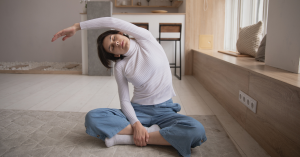
Strength Training: Use resistance bands or bodyweight exercises to build strength in targeted muscle groups.
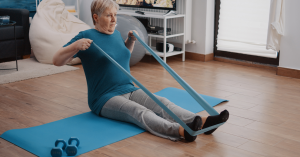
Balance and Coordination: Practice balance exercises to enhance stability and coordination skills.
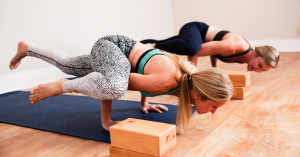
Wall Slides: Stand with your back against a wall and slowly slide down into a squatting position, keeping your knees aligned with your ankles. Hold for a few seconds, then return to standing. This exercise helps improve leg strength and stability.
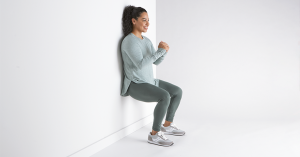
Standing Calf Raises: Stand upright and rise onto the balls of your feet, then slowly lower yourself back down. This exercise helps strengthen the calf muscles, which is important for walking and balance.
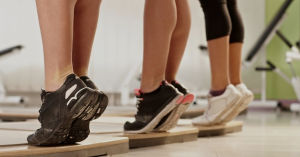
Seated Leg Raises: While sitting in a chair, straighten one leg in front of you and hold it for a few seconds, then lower it back down. This exercise helps improve leg strength and flexibility.
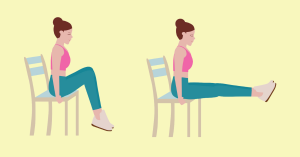
Shoulder Blade Squeezes: Sit or stand with your arms by your sides, then squeeze your shoulder blades together while keeping your shoulders relaxed. Hold for a few seconds, then release. This exercise helps improve posture and shoulder stability.
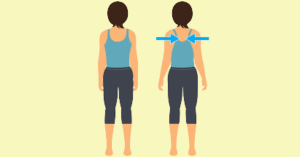
Heel-Toe Raises: Stand with your feet hip-width apart and raise up onto your toes, then rock back onto your heels. This exercise helps improve balance and ankle strength.
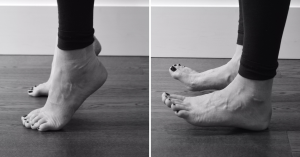
Hip Abduction: While lying on your side, lift your top leg upward while keeping it straight. Hold for a few seconds, then lower it back down. This exercise helps strengthen the muscles on the outer side of the hip.

Wrist Flexor Stretch: Extend one arm in front of you with the palm facing down. Use your other hand to gently press the fingers of the extended hand towards you, feeling a stretch in the forearm and wrist. Hold for 15-30 seconds, then switch arms. This exercise helps improve wrist flexibility and reduce stiffness.

Standing Quadriceps Stretch: While holding onto a stable surface for support, bend one knee and bring your foot up towards your buttocks, holding onto the ankle with your hand. Hold for 15-30 seconds, then switch legs. This exercise helps stretch the front of the thigh and improve flexibility in the quadriceps muscles.
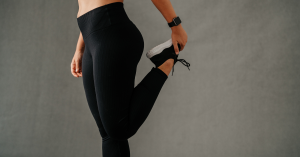
Benefits of Physical Therapy at Home
Convenience: Conducting therapy at home eliminates the need for travel, saving time and effort.
Cost-Effective: At-home therapy can reduce medical expenses associated with regular clinic visits.
Comfort: Exercising in your own home can provide a more relaxed and stress-free environment.
Flexibility: You can schedule your exercise sessions around your daily routine, making it easier to stay consistent.
Consistency: Being able to exercise at home makes it easier to incorporate therapy into your daily life, leading to sustained improvements.
Guidelines for Physical Therapy at Home by Yourself
Consult a Professional: Before starting, obtain a customized plan from a physical therapist suited to your specific needs and conditions. For specific guidance, such as How to do Hand Physiotherapy at Home?, seek instructions tailored to hand exercises.
Set Clear Goals: Understand what improvements you are aiming for and track your progress over time.
Follow a Structured Plan: Adhere to the detailed exercises and routines provided by your therapist, utilizing instructional videos if needed.
Start Slow: Begin with low-intensity exercises and gradually increase the intensity to avoid overexertion.
Track Progress: Maintain a log to record your exercises, noting any improvements or setbacks.
Physical Therapy That Targets Your Needs
Identify areas of concern: Tailor your at-home therapy routine to focus on specific areas that require rehabilitation or strengthening.
Personalized interventions: Incorporate exercises that target your unique needs, whether related to injury recovery, chronic conditions, or general fitness goals.
Common Mistakes to Avoid in Physical Therapy at Home by Yourself
Skipping Warm-Ups: Always perform a warm-up to prepare your muscles and prevent injuries.
Overdoing It: Avoid excessive strain by not pushing beyond your limits; gradual progression is key.
Inconsistent Routine: Stick to your exercise schedule to ensure steady progress.
Ignoring Pain: Stop if you experience abnormal pain and consult your therapist for advice.
Poor Technique: Ensure you are performing exercises correctly to maximize effectiveness and prevent further injury.
DO’s and Don’ts of Doing Physical Therapy at Home by Yourself
DO’s:
Warm Up: Always prepare your body with warm-up exercises.
Use Proper Techniques: Follow instructions to ensure exercises are done correctly.
Listen to Your Body: Pay attention to how your body responds to exercises.
Stay Hydrated: Drinking water is essential for muscle recovery and overall health.
Cool Down: Incorporate cool-down exercises post-session to aid recovery.
Don’ts:
Ignore Persistent Pain: Seek medical advice if pain continues.
Skip Sessions: Regularity is crucial for effective therapy.
Rush Exercises: Take time to do each exercise correctly.
Use Incorrect Equipment: Ensure you have the right tools for your exercises.
Start Without Consultation: Always consult a professional before beginning.
How Long Do Patients Continue Their At-Home Physical Therapy?
The duration depends on the nature and severity of your condition:
Post-Surgery Recovery: May require several months.
Chronic Conditions: Could last several years or be a lifelong commitment.
Acute Injuries: Typically, a few weeks to months.
Tips for Self Physical Therapy at Home
Create a Dedicated Space: Having a specific area for your exercises can help maintain focus and consistency.
Use Technology: Apps and online videos can offer additional guidance and motivation.
Stay Motivated: Set clear, achievable goals to keep yourself on track.
Keep it Fun: Adding variety to your routine can keep it interesting and enjoyable.
Stay Safe: Follow safety guidelines and use appropriate equipment to prevent injuries.
Essential Equipment for At-Home Physical Therapy
Exercise Mat: Provides a comfortable surface for floor exercises.
Resistance Bands: Useful for strength training and flexibility exercises.
Foam Roller: Helps with muscle relaxation and decreasing muscle tension.
Dumbbells: Useful for strength training and building muscle.
Balancing Tools: Such as stability balls to enhance core strength and balance.
Signs You Might Need Professional Assistance
Persistent Pain: Continuous pain may indicate a more serious issue that needs professional evaluation.
No Improvement: Lack of progress despite rigorous exercise suggests the need for expert advice.
Incorrect Form: Difficulty maintaining correct technique necessitates professional intervention.
Complex Injuries: Severe or complicated injuries should be managed under professional supervision.
New Symptoms: Unexpected symptoms or changes should be assessed by a healthcare provider.
Conclusion
Physical therapy at home can be a viable and effective option for many individuals looking to recover from injury, manage chronic conditions, or improve overall physical health. By consulting with a healthcare professional, setting clear goals, following a structured plan, and avoiding common mistakes, you can safely and effectively incorporate physical therapy into your daily routine. Remember to listen to your body, track your progress, and seek professional assistance when needed. With dedication and proper guidance, at-home physical therapy can significantly contribute to your physical well-being and enhance your quality of life.

